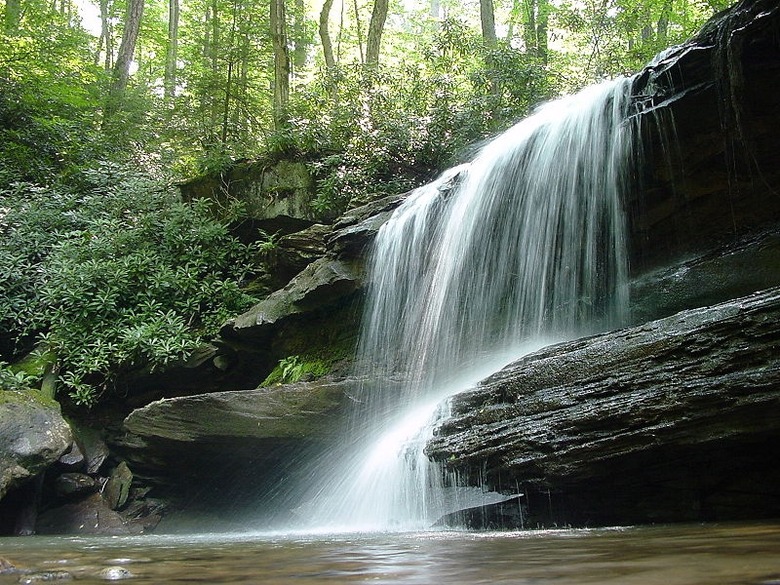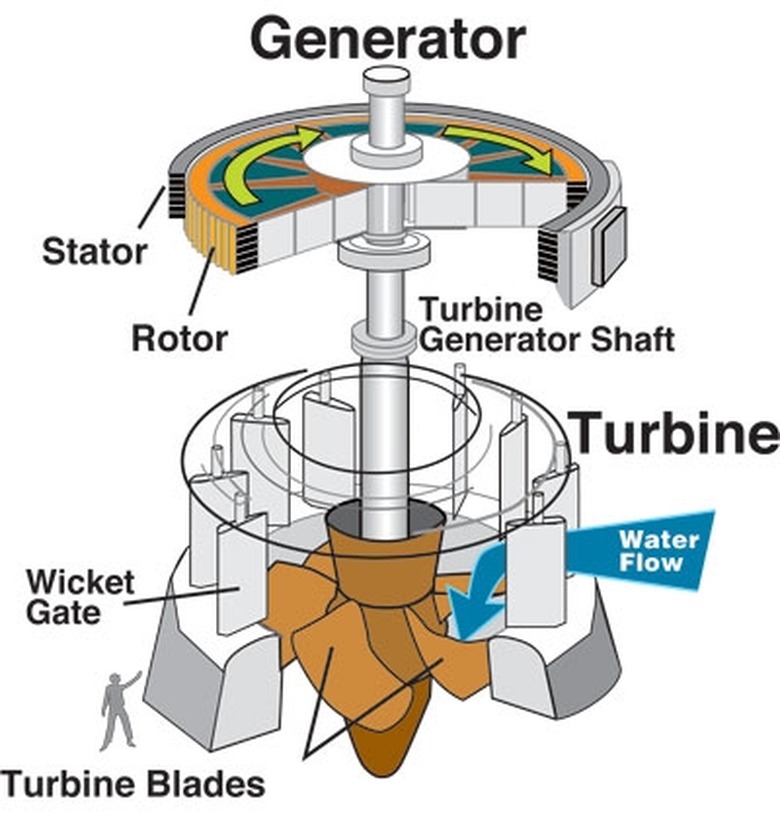How Does A Waterfall Generate Power?
History
History
Humans have long been harnessing the power of naturally flowing water in order to make life more convenient. Before the invention of electricity, river waterfalls were used to move turbines, which powered mills that could grind wheat into flour far faster than any human hand. Not only were these machines so effective that they are still used today, but they became the mechanical basis for generators which could create electricity from the motion of falling water, or hydroelectricity.
Turbines
Turbines
The creation of hydroelectric power begins with a water turbine. This device consists of angled blades wrapped around a wheel. Its operation is analogous to that of a pinwheel with the turbine spinning as it comes into contact with moving water. When the turbine is placed in the path of falling water, the turbine moves a shaft which, in turn, powers an electrical generator.
Magnetic Generators
Magnetic Generators
The type of electrical generator that is generally used to power water turbines is a standard electromagnetic generator. This machine works to convert mechanical energy (the energy of moving objects) into electrical energy. This is done through an apparatus which moves magnets around a conductor, generating an electromagnetic field that is then collected as electricity.
Damming
Damming
While hydroelectricity can be generated from naturally existing waterfalls, most hydroelectric plants generate water from human-made waterfalls. These waterfalls are made by building dams, which restrict the natural flow of a river into channels where the water will power turbines. This process maximizes the efficiency of energy collection because the control of the water flow creates higher pressure in a smaller area.
Cite This Article
MLA
Vork, Lauren. "How Does A Waterfall Generate Power?" sciencing.com, https://www.sciencing.com/waterfall-generate-power-4683787/. 24 April 2017.
APA
Vork, Lauren. (2017, April 24). How Does A Waterfall Generate Power?. sciencing.com. Retrieved from https://www.sciencing.com/waterfall-generate-power-4683787/
Chicago
Vork, Lauren. How Does A Waterfall Generate Power? last modified March 24, 2022. https://www.sciencing.com/waterfall-generate-power-4683787/

